Tennessee’s Bean Town
The South loves to brag on its bourbon. Bacon and ham certainly get their share of praise. Barbeque and fried chicken are put on pedestals. Even okra and sweet potatoes have gotten their well-deserved due with celebrations and community fairs held in their honor. But what of the humble bean? Sometimes it seems the bean is better suited as a punch line than as Instagram fodder. Beans have sustained Southerners for generations, going back far longer than the foods brought here by Europeans, Africans, and others. There is no better place to celebrate the bean and its cultural impact than the Bush’s Baked Beans visitor’s center in Chestnut Hill, Tennessee, a community forty miles east of Knoxville and nineteen miles from Pigeon Forge.
Pigeon Forge is best known for Dollywood and gorgeous mountain vistas, but it’s actually a pretty flat stretch of land. This flatness is probably what made it perfect for building things like roller coasters, wax museums, and go-kart tracks. Driving away from Pigeon Forge, particularly driving east toward North Carolina, gives you the impression that you’re entering the mountains and not leaving them. As the road gets narrow, it begins to undulate. The hillbilly miniature golf courses and t-shirt shops melt away into farms and small businesses. The parking lots become driveways, and the hotels become houses and trailers.
You see the factory first—it’s impossible to miss. There are semi trucks streaming out of white industrial buildings. There are silos and smokestacks, and a sweet smell in the air. Across the enormous parking lot labeled Employees Only, you can see the entrance to the factory. The huge entryway is made to look like a giant can of baked beans. Around the factory are fields dotted with cows that extend for acres. The complex is so impressive that it’s easy to overlook the visitor’s center on other side of the street, built to look like a country store. An austere black-and-white sign above its tin roof reads, “A.J. Bush & Co. General Merchandise.”
There’s a visitors’ parking lot across from the employee one. At one end of that visitor lot is the general store, which is also a museum and a café. At the other end is what used to be the Bush family home. It is white and stately, with a wrap-around porch; it also appears to be empty.
The museum exhibits say that A.J. Bush really once operated a general store on this site. He began canning tomatoes to be sure he’d have enough stock. When he died in the 1940s, he left the cannery, which had surpassed the store, to his sons.
The Bush brothers spread out across the country like apostles spreading a gospel of mass-produced canned goods. One brother, Claude, headed to Blytheville, Arkansas, and turned the Blytheville Canning Company into a financial success. Another brother went to Augusta, Wisconsin—near Eau Claire—to open a plant that continues to churn out beans to this day. Every Independence Day the people of Eau Claire County celebrate with the Bean and Bacon Days festival, named in honor of the Bushes.
The Midwest was an important production center for beans even before the Bush brothers’ arrival. Gilbert Van Camp had developed industrialized canning in Indianapolis during the Civil War. According to company lore, his success with the process ensured that the Union Army had a steady supply of fruits, vegetables, and—of course—legumes during the winter months. The army contract made Van Camp a wealthy man and may well have made loyal customers out of veterans after the war. In the 1930s Van Camp merged with Stokely, a company headquartered in Newport, Tennessee, just ten miles from the Bush factory in Chestnut Hill. Both facilities are still in operation, making East Tennessee the most significant producer of canned beans in the country.
Inside Bush’s museum is another huge can of beans. You can walk through this one and see the steps of production from fields to cans playing on video screens. There’s a display of international bean dishes where you can take the lids off of replica cooking vessels and smell artificial scents sprayed into the air.
Everywhere you turn, you see A.J.’s great-grandson, Jay Bush, and his Golden retriever sidekick, Duke. The two of them star in the company’s commercials, where Duke repeatedly attempts to sell the family’s secret recipe. Based on the rounds of applause that came from the screening room, where the commercials are played on a loop, there are a number of folks who are wildly entertained by a digitally modified talking dog’s wisecracks. A plush version of Duke is the gift shop’s number-one seller. He’s everywhere here; there are posters, statues, and even a green screen photo booth where you can have your picture made with Duke in a variety of settings.
In many ways it makes sense that beans would prove to be successful here in the mountains. Fred Sauceman, the esteemed foodways scholar at East Tennessee State University, says, “The signature dish of the mountain South is a bowl of soup beans, with a wedge of hot corn bread and a slice of onion.”1 What Mr. Sauceman refers to is not exactly what the Bush family makes, but their original recipe is not entirely removed from the traditional dish he describes. Part of the success of this region’s canneries is due to the fact that there were plenty of farmers who knew beans and were able to provide a reliable supply.
Like the soup beans, which were seasoned with a piece of pork, Bush’s still puts a postage-stamp-sized portion of bacon in each can of their beans. According to the museum’s film, 96 percent of Bush’s consumers say they can’t live without the bacon, but 98 percent of them throw out that little piece with the can. I eat that little piece. I think I always have, but to tell you the truth until I sat there at the epicenter of baked beans, I hadn’t really ever given it much thought. I think about my friends and family―some of them are cooks; many of them are foodies, for lack of a better term. Do they eat that piece of bacon? Ninety-eight percent is an overwhelming margin, but prior to learning this staggering statistic I would have assumed that all of my people ate that morsel of pork just as I did. Now, I have my doubts.
The movie is a clip film about the history of the company. Inviting curious visitors into the actual factory where the beans are made was impractical, so clips are shown of beans being washed, bacon being trimmed, and cans being labeled. There’s a scale where you can get your weight in beans. Modesty precludes me from revealing my exact count, but after seeing a couple hundred thousand beans flash up on the screen I felt a tinge of regret for being one of the two percent that eats the bacon.
I find the general store and café to be similar to the experience of visiting a Cracker Barrel. Home-style knickknacks meet home-style food. Naturally, there is a side of beans with every entrée. A local man waiting for a table ahead of me disagrees with my assessment, “I don’t care for Cracker Barrel, and I don’t go there anymore—I like it here much better. Much more like homemade.” I have a plate of fried catfish with a side of “Grillin’ Beans” and a slice of pinto bean pie for dessert. The pie is particularly good. When I pass this along to the waitress, she returns with a preprinted recipe card featuring a photo of the pie and the Bush’s logo.
Somebody at Bush’s must have visited the World of Coke or the Guinness Brewery. Like those temples of product, the Bush’s visitor’s center is essentially an immersive ad. You enter and learn all about what makes this particular product so fine. There are expansive displays of corporate “artifacts,” which amount to old advertisements and packages. But unlike downtown Atlanta or Dublin, Chestnut Hill is place that almost requires that visitors to stumble upon it or specifically seek it out. The museum claims to host an incredible 100,000 people a year―likely due to the proximity of Pigeon Forge and Gatlinburg. On their way to or from their vacations people are more likely to be curious, but something compels them to stop here. Maybe they’re hungry. Maybe they feel it’s time to give beans their due.
- Sauceman, Fred. (2007) Beans. In The New Encyclopedia of Southern Culture (pp. 119-120). Chapel Hill: UNC Press.


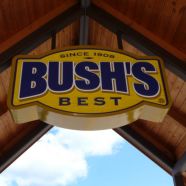





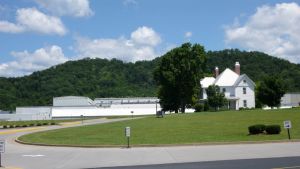
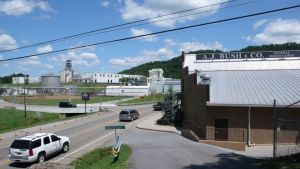
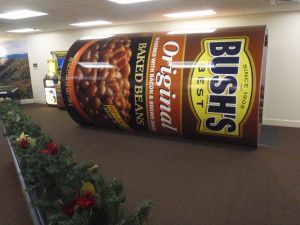
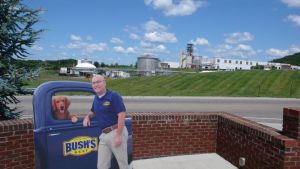
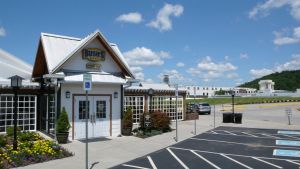
I wish I could go there now that I read your article.
Just had some today–they are great baked and even make a decent, but quick, red beans and rice when supper comes faster than we think. Really well-written and down-home piece!
Most corporate museums are just that. Corporate. And they are meant to reinforce the brand messaging. Sounds like you had your fill. That said, I enjoyed your essay.
Great story! I haven’t had baked beans for months. I must get some soon!
How could a corporate museum not be corporate, but it sounds like something fun to do once. The beans, however…oh help I feel an un-auntly bean joke coming on 😉